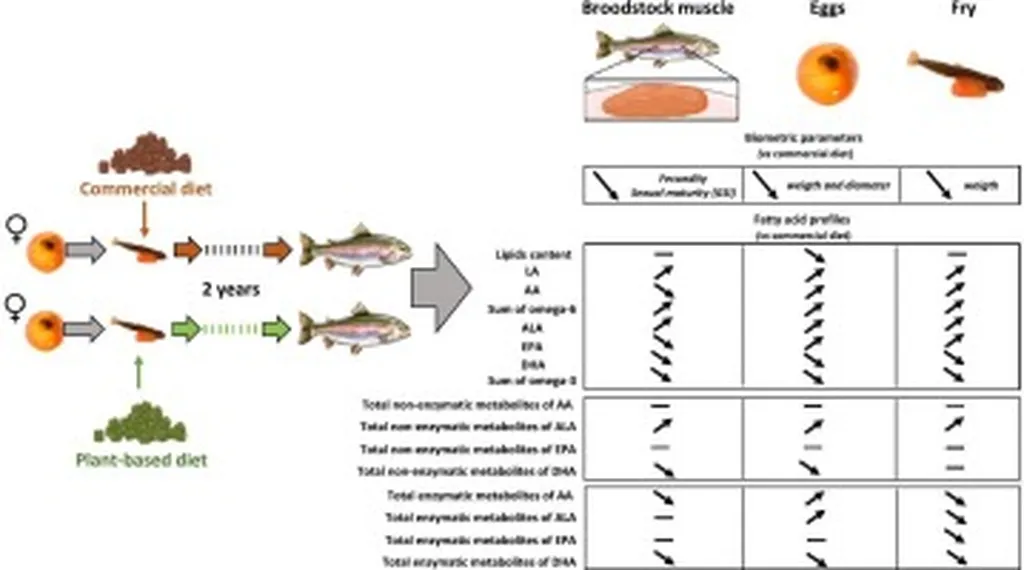In a groundbreaking study published in the *Journal of Functional Foods*, researchers have uncovered significant anti-inflammatory properties in fractionized lipids derived from the eggs of Oncorhynchus mykiss, commonly known as rainbow trout. The findings, led by Weerawan Rod-In of the Department of Marine Bio Food Science at Gangneung-Wonju National University in South Korea, and affiliated with Naresuan University in Thailand, suggest that these lipids could pave the way for novel anti-inflammatory treatments and potentially impact the agricultural and aquaculture industries.
The study focused on three types of lipids: neutral lipids (OM-NL), glycolipids (OM-GL), and phospholipids (OM-PL). Each type was evaluated for its fatty acid content and anti-inflammatory activity in LPS-stimulated macrophages. The results were striking. Polyunsaturated fatty acids (PUFAs) were found to be predominant in OM-NL and OM-GL, accounting for 41.80% and 40.96% of the total fatty acids, respectively. In contrast, OM-PL showed a higher content of monounsaturated fatty acids (MUFAs), comprising 42.52% of the total fatty acids.
“We were particularly intrigued by the distinct fatty acid profiles of each lipid fraction,” Rod-In explained. “The variation in PUFA and MUFA content suggested that each type of lipid might have unique anti-inflammatory mechanisms.”
The fractionized lipids demonstrated a dose-dependent reduction in the production of nitric oxide (NO) and the expression of inducible nitric oxide synthase (iNOS) in LPS-induced RAW264.7 cells. Furthermore, they reduced the transcript levels of pro-inflammatory cytokines TNF-α, IL-1β, and IL-6, while promoting the expression of anti-inflammatory cytokines TGF-β and IL-10. The study also revealed that these lipids inhibited the phosphorylation of proteins involved in the NF-κB and MAPK pathways, which are crucial in regulating inflammatory responses.
The implications of these findings are far-reaching. “Our results indicate that the fractionized lipids from O. mykiss eggs have significant potential as anti-inflammatory agents,” Rod-In stated. “This could lead to the development of new therapeutic strategies for inflammatory diseases and conditions.”
The study also highlighted the potential for these lipids to impact the agricultural and aquaculture sectors. By understanding the anti-inflammatory properties of these lipids, researchers can explore their use in animal feed supplements to enhance the health and productivity of farmed fish and livestock. This could lead to more sustainable and efficient aquaculture practices, benefiting both the industry and consumers.
The research, published in the *Journal of Functional Foods* (which translates to *Journal of Functional Foods* in English), opens new avenues for exploring the therapeutic potential of lipids derived from aquatic sources. As Rod-In noted, “This is just the beginning. The next steps involve further investigating the mechanisms of action and conducting clinical trials to validate these findings in human subjects.”
The study’s findings not only advance our understanding of the anti-inflammatory properties of lipids but also highlight the potential for innovative applications in both the medical and agricultural fields. As research continues, the fractionized lipids from O. mykiss eggs may well become a cornerstone in the development of new anti-inflammatory therapies and sustainable aquaculture practices.

